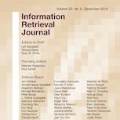The rapid growth of the so-called Internet of Things is expected to significantly expand and support the deployment of resource-limited devices. Therefore, intelligent scheduling protocols and technologies such as wireless power transfer, are important for the efficient implementation of these massive low-powered networks. This paper studies the performance of a wireless powered communication network, where multiple batteryless devices harvest radio-frequency from a dedicated transmitter in order to communicate with a common information receiver (IR). We investigate several novel selection schemes, corresponding to different channel state information requirements and implementation complexities. In particular, each scheme schedules the $k$-th best device based on: a) the end-to-end (e2e) signal-to-noise ratio (SNR), b) the energy harvested at the devices, c) the uplink transmission to the IR, and d) the conventional/legacy max-min selection policy. We consider a non-linear energy harvesting (EH) model and derive analytical expressions for the outage probability of each selection scheme by using tools from high order statistics. %Our results show that, the performance of all the proposed schemes converges to an error floor due to the saturation effects of the considered EH model. Moreover, an asymptotic scenario in terms of the number of devices is considered and, by applying extreme value theory, the system's performance is evaluated. We derive a complete analytical framework that provides useful insights for the design and realization of such networks.
翻译:所谓“物端互联网”的快速增长预计将大大扩大和支持资源有限装置的部署。因此,智能排期协议和技术,如无线电力传输等智能排期协议和技术,对于高效实施这些庞大的低功率网络十分重要。本文研究无线电通信网络的性能,多无电池装置从专用发报机中收获无线电频率,以便与共同的信息接收者进行通信。我们调查了几个与不同频道国家信息要求和执行复杂性相对应的新选择计划。特别是,每个计划都根据以下因素安排了美元-美元最佳设备:(a) 终端对终端(e2e)信号对噪音比率(SNR),(b) 装置中获取的能源,(c) 向IR的上链传输,以及(d) 常规/固态最大量选择政策。我们考虑的是非线性能源采集模式,并通过使用高秩序统计工具对每个选择计划的超值概率进行分析表达。 % 我们的结果表明,所有拟议计划的业绩都与一个错误直径直径直径直的网络,我们考虑的模型和极端分析框架的实现。



